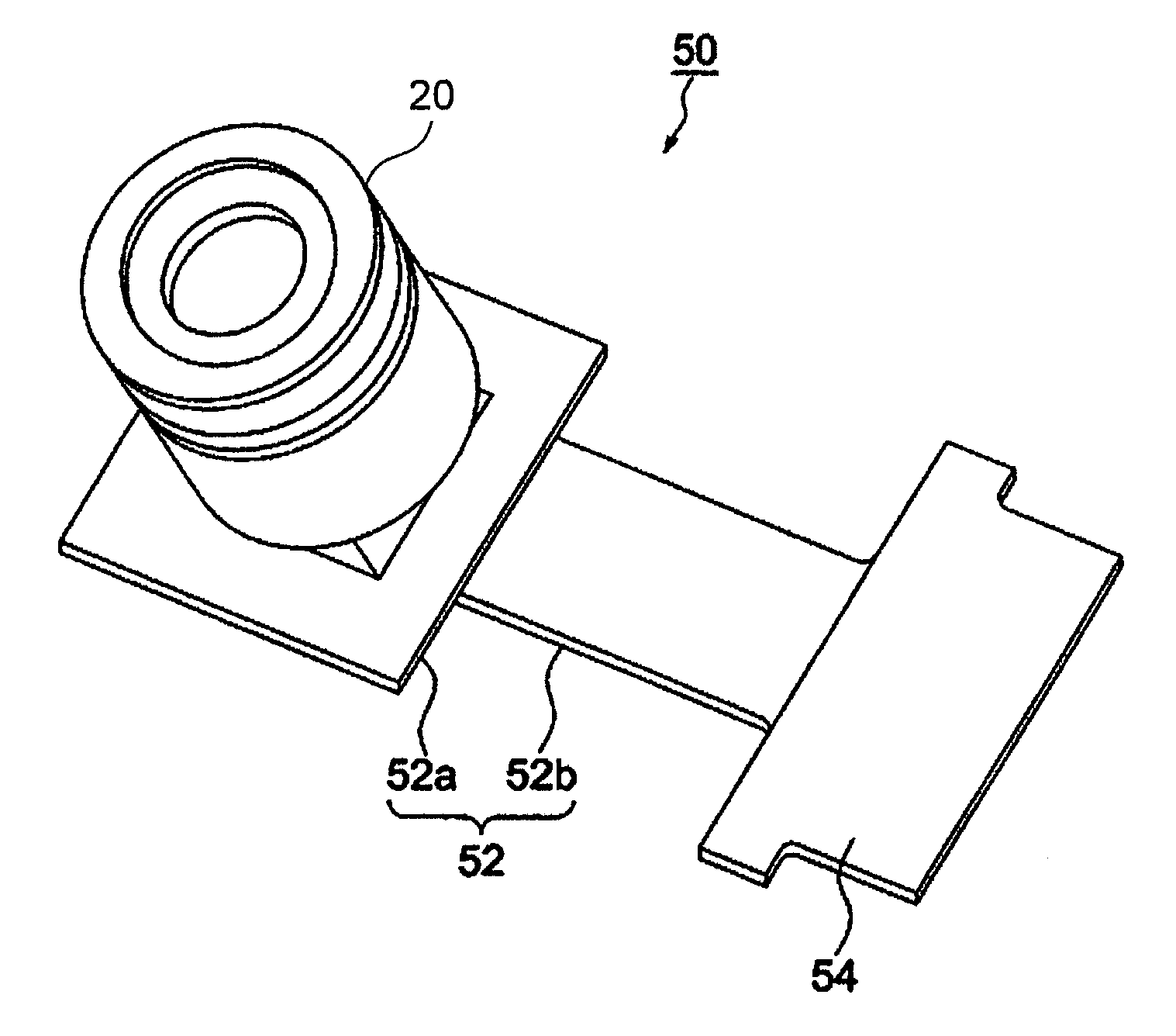Image Pickup Lens, Image Pickup Device Having Image Pickup Lens, And Portable Terminal Having Image Pickup Device
a technology which is applied in the field of image pickup and image pickup devices, can solve the problems of difficult shortening affecting the performance requiring a longer back focal length, so as to shorten the total length of the image-taking lens system, shorten the back focal length, and increase the number of divergent surfaces
- Summary
- Abstract
- Description
- Claims
- Application Information
AI Technical Summary
Benefits of technology
Problems solved by technology
Method used
Image
Examples
first embodiment
[0071]As shown in FIG. 4, the image-taking lens system is composed of, from the object side (subject side), a first lens element L1 having a biconvex shape and having a comparatively high refractive power at the object-side surface, an aperture stop s3, a second lens element L2 having a biconcave shape and having a comparatively high refractive power at the image-side surface, a third lens element L3 having a positive refractive power and having a meniscus shape with a convex surface facing the image side, and a fourth lens element L4 having a biconcave shape. The composite refractive power of the first to third lens elements L1 to L3 is positive. The reference sign F represents a filter such as an optical low-pass filter and an infrared cut filter, and the reference sign I represents the image plane on the image-sensing element.
[0072]The surfaces of the first to fourth lens elements are all aspherical. In particular, the aspherical surface at the image side of the fourth lens eleme...
second embodiment
[0074]As shown in FIG. 5, the image-taking lens system is composed of, from the object side, a first lens element L1 having a biconvex shape and having a comparatively high refractive power at the object-side surface, an aperture stop s3, a second lens element L2 having a biconcave shape and having a comparatively high refractive power at the image-side surface, a third lens element L3 having a positive refractive power and having a meniscus shape with a convex surface facing the image side, and a fourth lens element L4 having a biconcave shape. The composite refractive power of the first to third lens elements L1 to L3 is positive.
[0075]The surfaces of the first to fourth lens elements are all aspherical. In particular, the aspherical surface at the image side of the fourth lens element L4 has a negative refractive power near the optical axis, has an increasingly low refractive power toward a peripheral part of the lens surface, and has an inflection point in the peripheral part of...
third embodiment
[0077]As shown in FIG. 6, the image-taking lens system is composed of, from the object side, a first lens element L1 having a biconvex shape and having a comparatively high refractive power at the object-side surface, an aperture stop s3, a second lens element L2 having a biconcave shape and having a comparatively high refractive power at the image-side surface, a third lens element L3 having a positive refractive power and having a meniscus shape with a convex surface facing the image side, and a fourth lens element L4 having a biconcave shape. The composite refractive power of the first to third lens elements L1 to L3 is positive.
[0078]The surfaces of the first to fourth lens elements are all aspherical. In particular, the aspherical surface at the image side of the fourth lens element L4 has a negative refractive power near the optical axis, has an increasingly low refractive power toward a peripheral part of the lens surface, and has an inflection point in the peripheral part of...
PUM
 Login to View More
Login to View More Abstract
Description
Claims
Application Information
 Login to View More
Login to View More - R&D
- Intellectual Property
- Life Sciences
- Materials
- Tech Scout
- Unparalleled Data Quality
- Higher Quality Content
- 60% Fewer Hallucinations
Browse by: Latest US Patents, China's latest patents, Technical Efficacy Thesaurus, Application Domain, Technology Topic, Popular Technical Reports.
© 2025 PatSnap. All rights reserved.Legal|Privacy policy|Modern Slavery Act Transparency Statement|Sitemap|About US| Contact US: help@patsnap.com



